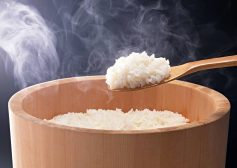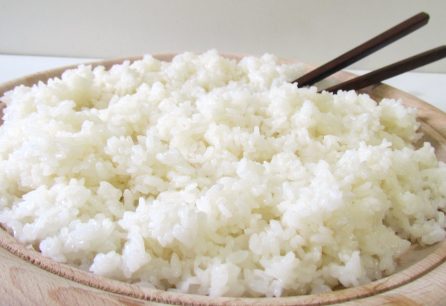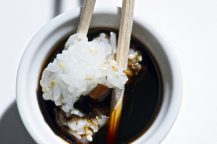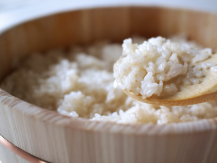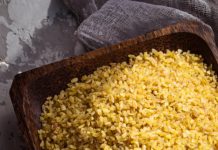Today it’s hard to find someone who would never hear of land. This original dish of Japanese cuisine has been very popular all over the world for many years. To make it yourself, you must be able to choose the right ingredients. The main component of sushi is, of course, rice. But, firstly, not every cereal is suitable for this dish. And, secondly, it must be able to properly cook. So, how to cook rice for sushi, and which variety is best suited for these purposes?
Material Content:
What rice to choose for cooking Japanese cuisine
In Japan, rice is the main product, without which almost no meal can do. It is used not only as a side dish, but also as the main ingredient for cooking other, more complex dishes. Given that the Japanese eat mostly chopsticks, the use of friable rice is excluded.
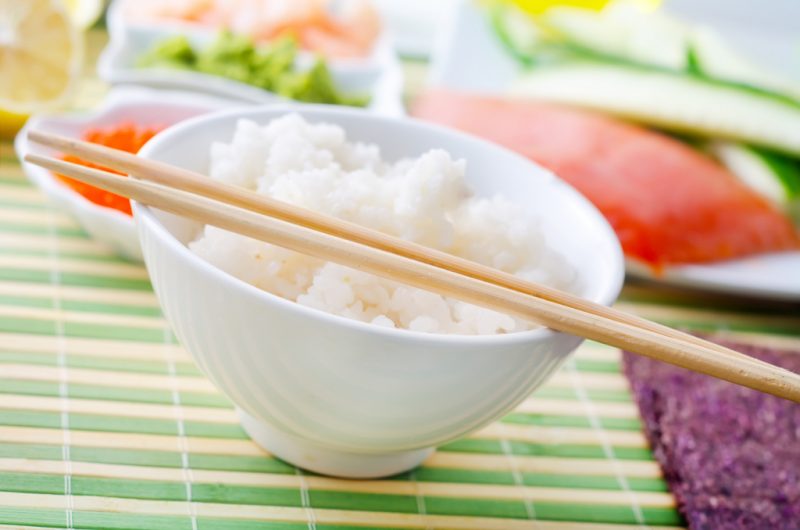
Local chefs most often choose the following varieties:
- "Urutimai." After processing, its short grains acquire a rich sweet taste and become very sticky.
- "Hakumai." Commonly used for sushi.
- "Motigome." Many different desserts are made from it, delicious cakes are baked, and even excellent sweet wine is prepared.
- Genmai is polished brown rice. Due to the large amount of fiber, it is considered the most nutritious.
If we talk about sushi, then for such a dish it is better to choose, of course, “hakumai” or “urutimai”.
True, the cereal itself is only half the battle. You also need to know how to cook rice for sushi. Indeed, according to technology, in order to maintain the shape of the product, it must be sufficiently sticky.
There are many different ways to cook such rice. Let's consider only some of them.
How to cook rice for sushi in the traditional way
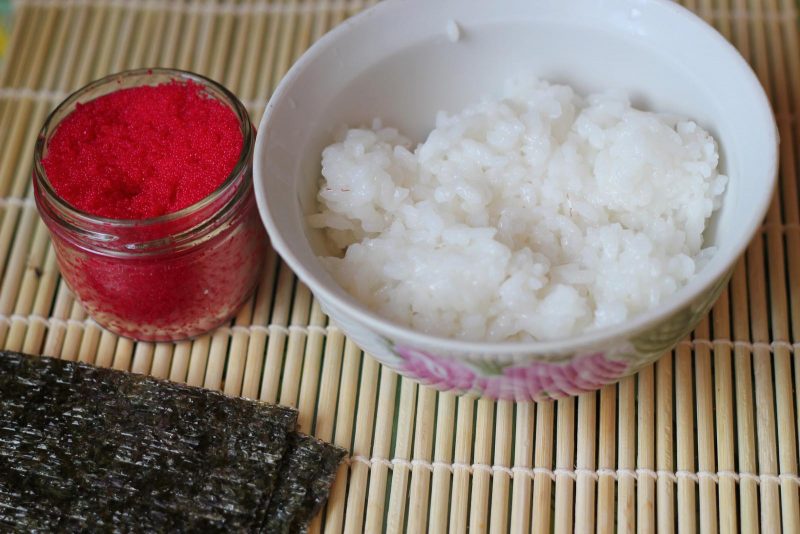
To cook rice correctly, you must adhere to a certain technology, which includes the following required steps:
- washing the raw materials;
- cooking;
- refueling followed by insisting.
At home, any housewife can use one of the traditional cooking options.
In this case, you will need:
- 700 grams of polished rice;
- 30 grams of salt (it is better to take sea);
- 70 grams of apple cider vinegar;
- 0.7 liters of cold water;
- 1 plate of algae "Kombu";
- 2 tablespoons of sake;
- 35 grams of liquid honey.
How to cook rice for rolls:
- First rinse the cereal thoroughly. To do this, it can be poured into a colander, and then put under a stream of cold water. During processing, rice must be constantly stirred. When the water becomes clear enough, rice should be set aside and allowed to “rest” for about 45 minutes. During this time, the cereal absorbs moisture remaining on the surface and slightly swells.
- Pour dried rice into a pan, and then pour ordinary cold water.
- Add seaweed and sake to it. Insist approximately 60 minutes.
- Remove the algae from the pan.
- After that, cook the cereal in the usual way.
- Then the rice should stand for about another quarter of an hour. Then you need to carefully transfer it to another dish.
- Combine honey with vinegar and sea salt. Pour the cereal with this mixture and mix.
After cooling, the finished rice can be used for further work.
Read also:how to hold sushi sticks
Cooking in a slow cooker
With the advent of multicookers, it became much easier for housewives to cook even the most complex dishes. Having in your kitchen such a "smart" machine, cooking, for example, rice for sushi will not be difficult.
To work, you only need:
- 2 multi-glasses of rice;
- 2.5 multi-glasses of water;
- 10 grams of fine salt;
- 1 cube of pressed algae;
- 10 grams of soy sauce;
- 50 milliliters of apple cider vinegar;
- 8 grams of sugar;
- juice of half a lemon.
How to cook rice for sushi in a slow cooker:
- First of all, pour the cereals into a bowl and rinse. Experts recommend changing the water at least 7 times.
- Pour the washed rice into the multicooker bowl.
- Pour it with water.
- Put a cube of pressed algae.
- Set the “Rice” mode on the device panel and cook for 25 minutes. As soon as the water boils, you need to remove the cube.
- Do not open the lid after the timer signal. Krupa must still steam for 5 minutes.
- In a separate bowl, mix the remaining ingredients.
- Pour the cereals with them and mix.
After cooling, the fragrant and sufficiently sticky rice will be completely ready for molding.
With rice vinegar
According to the classical technology, grits for sushi and rolls are made with rice vinegar.
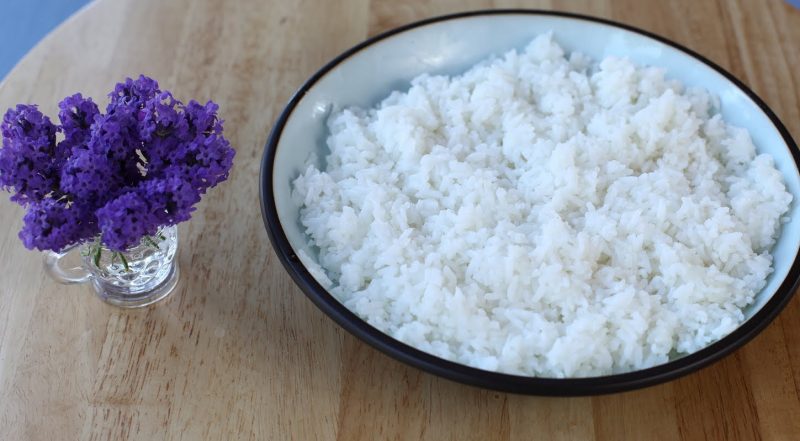
This product has two varieties:
- Japanese (has a slightly sweet taste);
- Chinese (it is very sharp with a slightly noticeable slight sourness).
Depending on the particular type of rolls and personal taste preferences, the cook can choose one or another type.
And to cook cereals for sushi, you will need:
- 1 full glass of water;
- 8 grams of sugar;
- 230 grams of rice;
- 2 to 3 grams of salt;
- 35 - 40 grams of rice vinegar.
How to cook rice for sushi, having these components available:
- Pour the cereal into a bowl, fill it with water and rinse thoroughly. This must be done very carefully so as not to break the grains themselves.
- Rinse the washed rice again with cold water and leave for 20 minutes. Then the slightly swollen cereal should be filtered, throwing it into a colander.
- Transfer dried rice to the pan.
- Add the right amount of water.
- Put the container on the stove.
- Cook rice cereal under the lid for a quarter of an hour after boiling.
- Separate the remaining ingredients in a cup. Wait for their complete dissolution.
- Transfer rice to another bowl, pour fresh dressing and, slowly, mix.
So that the products are well formed, the grains do not have to be completely cold. The optimum temperature of rice is 36 degrees.
How to Make Sushi Rice Dressing
The mixture used to season rice is called sushizu.Without it, boiled cereal is an ordinary porridge with almost no taste or smell. And dressing makes it fragrant and more sticky. This greatly facilitates the molding process of any type of sushi, and also gives the finished product a characteristic taste and aroma. How is a classic rice dressing prepared?
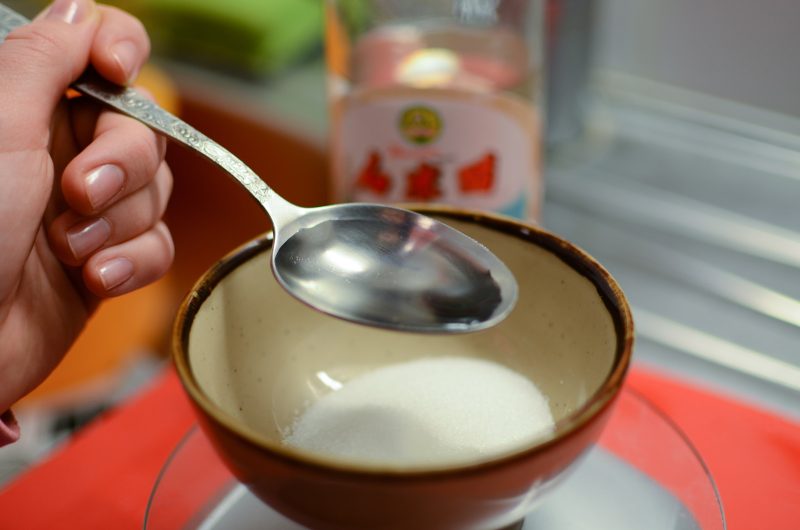
For this, only 3 main ingredients will be needed:
- 30 grams of special rice vinegar;
- 1 teaspoon of granulated sugar and the same amount of salt.
The technology of its preparation is extremely simple:
- Collect all products in a pan.
- Put it on the stove.
- Heat until the components are completely dissolved. In this case, the fire should be small. You can not boil the mixture.
If there is no rice vinegar at hand, then you can use other options for dressing.
Take, for example, the simplest recipe for which you need:
- 60 grams of grape vinegar;
- 25 grams of granulated sugar;
- 10 grams of sea salt.
The method of preparing the mixture remains the same.
Important Rice Cooking Tips
In any business, there are always subtleties, without which it will be difficult to achieve the desired result. Therefore, before you get to work, you need to figure out how to cook rice for sushi and do the right dressing.
Specialists advise paying special attention to the following points:
- Rice selection. The grains should be round, white in color and without visible damage.
- Cereals must be washed well to remove excess starch from the surface of the grains. Otherwise, they will become too sticky, and you get the usual porridge.
- It is important to strictly observe the ratio of components. With a lack of water, the grains will not boil, and excess moisture will turn the cereal into a paste.
- For cooking, it is advisable to use dishes with thick walls and a bottom so that the heat is evenly distributed throughout the volume.
- You need to cook rice under the lid.
- During cooking, grits should not be mixed.
- How to make sure that there is no water left in the pan? After time, you can pierce the rice with a knife. If moisture is still present, the pan must be kept on fire without a lid for literally one minute.
- To make seasoned rice more sticky, cover the container with a towel dipped in cold water.
Knowing all these secrets, even an aspiring cook can cook rice for sushi correctly.



